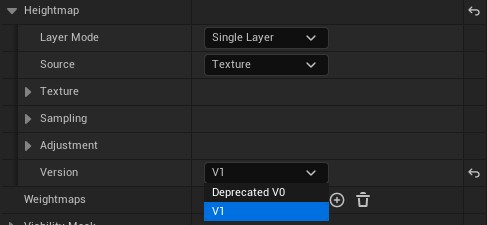Stamp Brush
Stamp Brush is the most commonly used type of brush. It deforms landscape based on the provided heightmap and can also affect weightmaps/biomes.
Brushes in Errant Landscape are components, not actors. Thanks to that, they can be combined into blueprints and manipulated together with other game objects and meshes.
Layering
You are able to blend multiple layers of textures/material and other inputs in the single brush.
In any of the brush outputs (heightmap, weightmaps, biome mask) change the Layer Mode from Single Layer to Layered.
Now you can add items to the Layers list where each layer will have its own input(texture/material), sampling settings, adjustment and settings for how to blend it with other layers.
To use this system make sure that you're using the V1 version of stamp brush settings.

World Texture Mapping
You can utilize the brush's world position as the UV coordinates for sampling textures within the stamp brush by selecting the World option under the Adjustment/Sampler Mode property.
This capability is particularly beneficial when dealing with tiling noise textures and heightmaps.
Material Input
You can use materials as inputs to stamp brush. In those materials you can set up any logic you want. Load textures etc.
You can use any material that has Post Process material domain. The Output of the emissive channel will be used as the stamp.
It's a good way to manipulate texture if brush adjustment operations we provide are not enough.
If you're seeing your textures that you've sampled in the material blurred set LOD-Bias on textures to 0, as mip-mapping won't necessarily work correctly in post process materials.